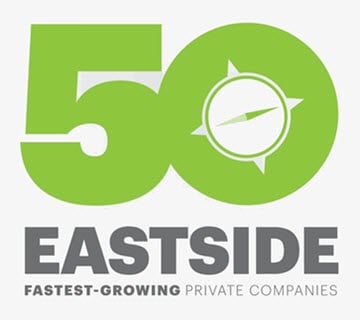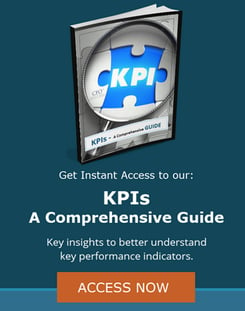 In a keynote speech at the 2018 Manufacturing Finance Summit, Dr. Peter Colman, a global pricing strategy expert, explained that price is the strongest profit driver for manufacturers. The data he cited showed that a 5% increase in price results in a 33% increase in operating income, whereas a 5% increase in volume only results in a 20% increase in operating income.
In a keynote speech at the 2018 Manufacturing Finance Summit, Dr. Peter Colman, a global pricing strategy expert, explained that price is the strongest profit driver for manufacturers. The data he cited showed that a 5% increase in price results in a 33% increase in operating income, whereas a 5% increase in volume only results in a 20% increase in operating income.
The message here is clear: selling smarter is better than selling more.
And while many things have changed for manufacturers in the years since, this wisdom has not. Pricing remains critical for manufacturers as a leading revenue driver.
Unfortunately, mastering the art of pricing is an elusive activity that requires extensive data analysis, key personnel skillsets, and the right strategic approach. Find out more about what manufacturers need to know about pricing:
Counteracting Pricing Pressure
Manufacturers are facing more pricing pressure than ever before, both internally and externally. Pressure is coming in the form of:
- Lower-priced international competition
- A labor shortage
- Increasing wages and benefits costs
- Greater customer bargaining power
- An abundance of customer financing options
- A push for greater price transparency
- Rising costs of utilities and raw materials
- Transportation barriers and delays
- Evolving business targets
- Stakeholder interests
Navigating each of these constraints or demands is difficult enough independently but layered together they create the kind of pressure that keeps senior leadership up at night. The solution is not simple.
Earlier this year Iain Lewis and Sara Gansert at Pricefx put it this way when talking about manufacturing pressures:
“Global manufacturing companies are arguably facing a more challenging set of conditions than in other era in their collective histories. The prices of raw materials—including zinc, lithium, iron, copper, steel, lumber, and plastics—are on unprecedented rises, while investment in plant capacity is struggling to keep pace with the demand of growing global markets. Simultaneously, distribution and shipping costs have accelerated in recent times, meaning that manufacturers cannot simply shift production abroad where labor costs are less as a money-saving method.”
Manufacturers must rely on extensive data forecasting and analysis to help them find the right price point to ensure ongoing profitability. Armed with that data, manufacturing CFOs can work with the rest of the executive level suite to set forth a strategic pricing plan to achieve business goals.
Pricing, Not Costs
Shipping costs are coming down again, but they still remain much higher than they were just two years ago. With the current cost of transpacific container shipping still four times higher than it was in 2020, costs are at the forefront of all manufacturer’s minds.
In the midst of dramatically rising costs across raw materials, packaging, energy, and transportation, many manufacturers have become hyper-focused on cost cutting. However, the never-ending push to reduce costs and trim expenses does nothing to offer value to customers. This strategy also does not play to manufacturers’ strengths. When discussing manufacturing cost cutting Dr. Colman explains, “Most companies are better at value creation than value extraction.”
In the end, he recommends that manufacturers focus more closely on profitable pricing for the products they are already making and selling rather than stripping cost out of their existing products or looking for ways to offer lower priced alternatives. This approach preserves value in a manufacturer’s current offerings while setting them up for future value creation as well.
Including the Right People
If a manufacturer’s best strategy is to align pricing with the costs of manufacturing their products, then they will need to have serious pricing conversations to ensure they are able to remain profitable even as the prices of inputs continue to rise. Including the right people in these conversations is critical. However, manufacturers must be careful to not include too many people in the discussion. Dr. Colman reminds us,
“Pricing often comes down to guesswork. Too few people know how to quantify value, articulate it and determine a price accordingly… Achieving accurate pricing is also complex because it typically involve[s] too many people, too many options, too many interactions and too little time.”
So, while critical personnel like the CFO must be included, other personnel like the product engineers likely should be excluded from the conversation. As our team explains when discussing the role of a CFO in manufacturing,
“Manufacturing CFOs will also play a role in product pricing and positioning. Relying on your CFO in this area is especially critical because one of the primary goals when creating new products is not to offer more features, it is to generate more profit.”
Raising Prices
Warren Buffet was well known for his stance on pricing. He strongly believed that the litmus test for a good company was its ability to raise its prices without losing customers. And yet, most manufacturers still balk at the idea of raising prices because they fear that doing so will cost them sales and harm their brand reputation. However, if that is the case, it is likely not a good sign because as Seth Godin, a renowned marketer and best-selling author, famously said: “Perhaps the reason price is all your customers care about is because you haven’t given them anything else to care about.”
When prices must be raised, your finance team should aid in the decision-making process to land on numbers that make sense for the products themselves and the industry as a whole. However, everyone involved should be prepared for the fact that the proposed pricing increases may not be adopted as recommended. Many companies struggle with raising prices, especially manufacturers. It is not uncommon for a company these days to only achieve a fraction of the price increase they are seeking. When a significant gap occurs, leadership must remain open to the idea of reevaluating pricing again in the near future as market conditions and buying patterns continue to change.
A successful manufacturing CFO can serve as the impetus for regular pricing evaluations because they will lean on the data to make the hard decisions. As a resource on manufacturing leadership summarizes,
“Great manufacturing leaders must be willing and able to make decisions. They don’t succumb to analysis paralysis or fear input from key stakeholders. Once a decision has been carefully considered by all those involved, great manufacturing leaders know when to step up and make the decision. They’re also prepared to stand by it.”
If your manufacturing operation needs stronger financial leadership, please reach out to us! We offer CFO consulting services for manufacturers all across the US. Find out how we can come alongside your company to assist with pricing decisions and the day-to-day management of your operation.





